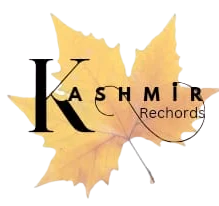(Bhutto’s Execution April 4, 1979)
(Kashmir Rechords Excusive)
Forty-five years ago on April 4, 1979, Zulfikar Ali Bhutto, Pakistan’s former President and deposed Prime Minister is hanged to death! The gruesome act puts Kashmir on fire! For the first time in the history of Kashmir, anti-Pakistan and anti-Jamat-e-Islami demonstrators are held everywhere. Effigies of Pakistani leaders and Pakistani flags are burnt. Pakistan’s image in Kashmir is at lowest ebb.
Even as Kashmiris and the entire Kashmiri leadership of that time forcefully raise the demand for liberating Pakistani Occupied Kashmir (PoK), the then Indian leadership, headed by Prime Minister Murarji Desai fails to encash the golden opportunity. Even Jammu and Kashmir Assembly raises the matter but the momentum is lost so much so that within a decade, strong 1979 anti-Pakistani wave in Kashmir turns into anti-India-storm by 1989!

It was for the first time that soon after the execution of Bhutto, Kashmiris had come out of their homes in thousands raising slogans like “Pakistan Ko Tod Do“ (Break Pakistan) and “Azad Kashmir Ko Wapas Lo” (Take Back Pakistan Occupied Kashmir). Such kind of demonstrations were witnessed mostly in Jamat dominated towns like Sopore, Anantnag, Shopian, Baramulla, Kupwara and Kulgam were people attacked and destroyed property belonging to Jamat-e-Islami leaders. In some cases, agitating mobs physically assaulted Jamat leaders. In towns like Sopore, Police had to resort to even firing.
Public sentiment and resentment against Pakistan was so much that even members of ruling National Conference demanded in J&K Assembly to get PoK immediately liberated from Pakistan. Newspapers of April 5/6, 1979 reported that People of the valley were sore at the foreign policy of India vis-a-vis Pakistan. This was probably because top leaders like the Prime Minister and the Foreign Minister had not openly condemned the Pakistan government for Bhutto’s execution.

Jamat-e-Islami attacked
Kashmiris had specifically targeted Jamati Islami leadership for the reason that Jamat was sharing power with Gen Zia-ul-Haq, responsible for pronouncing death sentence upon Bhutto. This in spite of the fact that the leaders of the Jamait Islami in Kashmir were trying to convince people that they are an entity quite apart and independent of similar organisations in India or Pakistan.
On April 6, 1979 the lone Jamat-e-Islami MLA in J&K State Assembly, Syed Ali Shah Geelani, alleged that his party’s offices and properties of its prominent workers were attacked and burnt all through the valley since April 5, 1979. Some Jamat leaders were physically manhandled.


